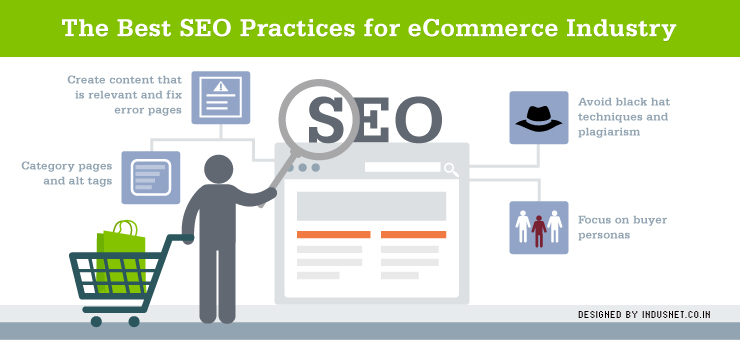
With eCommerce stores mushrooming and people gradually making a shift of paradigm when it comes to making purchases, it is becoming increasingly important to focus on the search engine optimization factor of eCommerce websites.
With the kind of growth that we have seen in online stores and with people preferring to choose ordering products on their phones, tablets and desktops & laptops, we need to ensure that the content on our eCommerce websites are properly indexed and made available for search engines to index. It may take a while to get a grip over all the rules that dictate SEO for eCommerce but it is not difficult to understand or practice.
In this article, let us take a look at some of the best practices which help in optimizing SEO for eCommerce websites.
1. Avoid black hat techniques and plagiarism
When it comes to SEO best practice, it is quite similar to what you follow on other websites. Strictly speaking, avoid all kinds of black hat SEO. ensure that you follow only white hat methods and do not indulge in backlinks purchases and other unethical means to reach success. Google will only penalize you for it. Secondly, do not copy and paste product descriptions from the manufacturers.
Google considers this plagiarism and that you are duplicating content. Instead, build a healthy social environment and ask people to leave comments, user-generated opinions about the product and so on and so forth. This should take care of keeping your SEO practice clean and tidy.
2. Focus on buyer personas
When you create content on your eCommerce website, write for your buyer personas. Understand where they are coming from and what they need. When you feature products in the side bar or on the home page, understand what is driving traffic to your website. If it is the Christmas time and you deal with books, ensure that Christmas or church-related books appear on the front page.
It goes without saying that you need to know what is happening and you must feature products that are in demand at that particular time. Also, focus on building your social media pages, engage in email marketing and purchase display ads. All the three sources are great ways to build and increase traffic to your website.
3. Create content that is relevant and fix error pages
Websites do not exist in islands. They need to be accessible from various search engines. If you have outdated products or products that are no longer in supply, weed out those pages, instead of having “not available” page. IT is important to hire people who write product descriptions that are different from what the manufacturer has given you.
This ensures that the content on your website is unique and that you will rank higher in Google search results. As you may already know, duplicate content will attract penalties. If you want to improve your SEO, try and build a community of sort which will help people to leave comments and thus add to the content ecosystem within your website.
4. Category pages and alt tags
Make sure that all your products are listed under appropriate categories. You must develop deep links from your category pages that lead to product pages. This will help users to experience a sense of cohesion and unity. Moreover, it also helps you to build internal linking, which is important in SEO. Alternate text or alt tags are important to ensure that your photos are optimized for SEO as well.
If you have a number of images for the same product, tag those photos with alt tags and ensure that people get what they want even by looking at images and hovering their cursors over the image. This helps to build a good level of SEO as well and is good for traffic in the long term.
Final thoughts
Most of the eCommerce websites today either have incomplete product pages, duplicate product descriptions, just images in place of text, products that are no longer in stock still being displayed and a host of other problems. With these issues in mind, it is becoming clear that we all need to follow certain SEO best practices, when it comes to the eCommerce industry. If you follow the best practices listed above, you will ensure that your ecommerce website is SEO optimized.